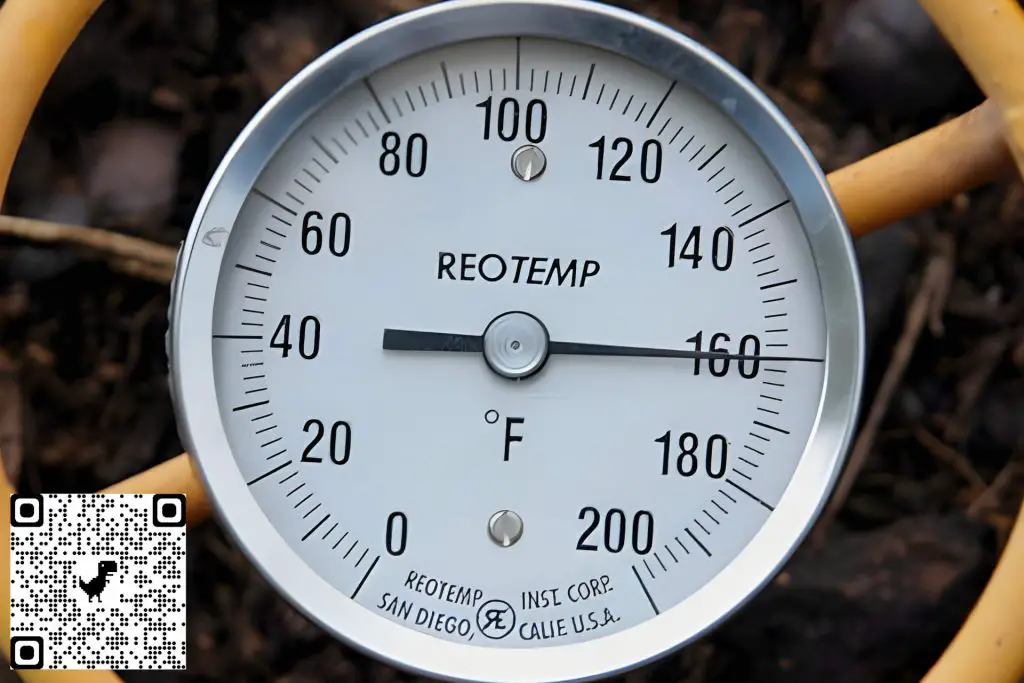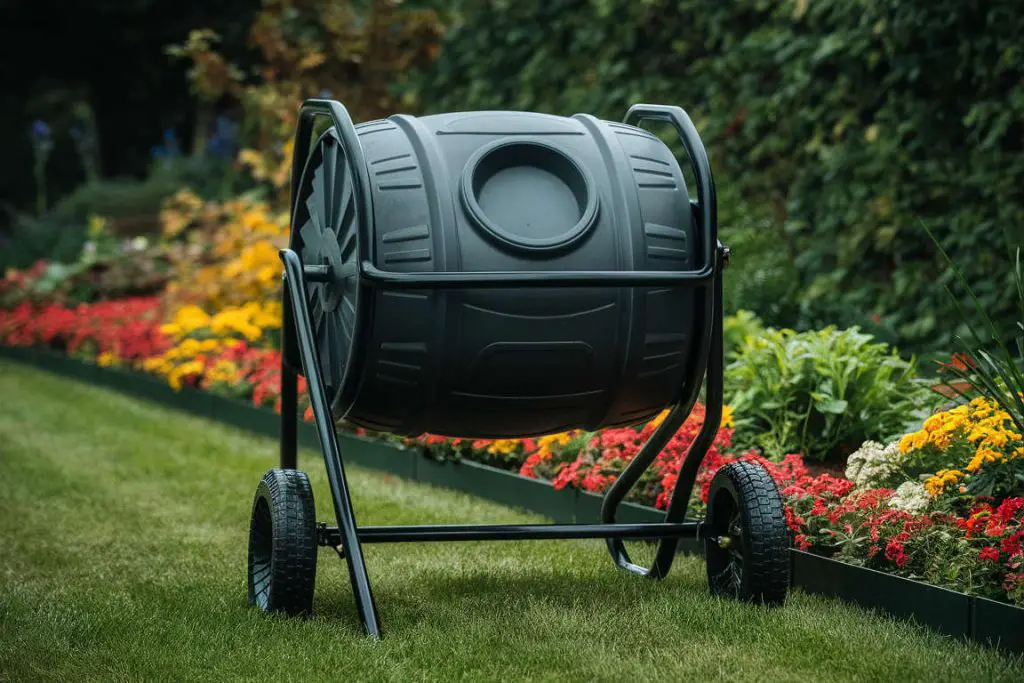Turning Your Compost: How Often to Turn Compost to Speed Up Decomposition
Turning your compost can seem like a real chore but the process of turning actually can play a crucial role in the science of transforming your pile of organic material into this black gold.
The composting process seems almost magical, and yet behind it lies a complex chemical reaction that takes place between the air, moisture and organic materials when they combine. Turning your compost pile plays a significant role in facilitating this chemical reaction.
Although composting is a very forgiving process, how often you turn your compost has a huge impact on the chemical reaction. We will look at why this is the case, how often and when you should turn your compost and adopt the best techniques for doing so.
Why You Turn Compost

The process of converting your organic materials into nutrient-rich compost is caused by a chemical reaction resulting from the mixing of the brown and the green organic materials with moisture and air. This triggers the decomposition of the materials, gradually turning the pile into finished compost. The chemical reaction can be regulated in a number of ways to speed or slow the process, one of which is by turning your compost.
Combining the carbon and nitrogen (from the organic materials) with moisture and oxygen (from the air) in different ratios changes the rate at which the decomposition happens. The two most important elements for regulating the rate of decomposition are the nitrogen content of the pile and oxygen.
Turning Increases the Oxygen in the Compost Pile
Adding oxygen to your compost pile has a similar effect as that of injecting nitrous oxide into a combustion engine. It supercharges the chemical reaction heating up the compost pile and allowing more microbes to be produced and thrive, thus expediting the decomposition process creating finished compost in a shorter timeframe.
There are of course several ways in which you can increase the amount of oxygen in your pile such as running air pipes through the pile at different angles but the simplest method is to turn the pile. The more frequently you turn the pile the more oxygen gets into all parts of it, increasing the temperature and maintaining or increasing the decomposition rate.
How Often to Turn a Compost Pile
How often you turn your compost pile is dependent on a number of factors, but primarily it depends on the composting process that you are using and the size and thickness of the pile.
The two main composting processes employed are cold composting and hot composting of which one of the main differences between the two is the turning strategies.
Cold composting is likely to be the process that the majority of home composters follow. It usually produces finished compost in around three to six months with the more you turn the pile moving you closer to the three-month mark. Generally, with cold composting, you can turn the pile every two to four weeks, even longer gaps won’t affect this time frame too much.

With regards to hot composting, the temperature of the pile is key to expediting the decomposition process. This means that turning the pile on a regular basis initially every one to two days during the first week and a half before reducing the turning when you can maintain a constant heat range of 120° to 140° F. The advantage of the hot composting process is that it can produce finished compost in as little as four to six weeks occasionally even quicker.
When to Turn Compost
When you turn your compost will be governed by the temperature of the pile and the progress of the compost heap’s decomposition to finished compost. both of these conditions relate to the composting process that you are using.
Generally, if you have constructed your pile with the correct carbon to nitrogen ratio then you are, for cold composting, going turn at regularized intervals monitoring the decomposition process. If it is slower than anticipated you might increase the turning to try to speed up the process.
If you are hot composting, although you will have a schedule you will also be monitoring the compost thermometer to ensure it remains in the 120° to 140° F range.
What happens if you don’t turn your compost?
Irrespective of whether you turn your compost pile or not the organic materials that it is made up of will decompose, except that the decomposition will happen incredibly slowly.
The reason that it will still decompose is that there will still be some, even if it is a very limited amount of oxygen present within the pile. The pile will contain both carbon and nitrogen and together with any moisture sucked from the air provides all the components for the reaction.
As we have mentioned turning increases the oxygen circulating in the pile if you don’t turn it then little or no additional oxygen will get into the core of the pile reducing the temperature of the pile which slows down the decomposition rate. The result is that it could take up to a year or more for the pile to turn into finished compost, although much will depend on the make of the pile. Some organic materials, such as grass clippings, can decompose in six months, while brown materials such as wood chips or cardboard take considerably longer.
What Is the Most Efficient Way to Turn Compost?

The objective of turning your compost pile is to get air circulating through the pile. The majority of the heat should be in the center of the pile, as that is where the decomposition process will be working most efficiently.
When turning your pile what you should be looking to do is to rotate the layers of material on the outside of the pile with the layers of material on the inside. This will help the microbes thrive through the heap and not just decompose the material on the inside.
The size of your compost pile will likely determine how you will achieve this. For most residential compost piles usually, a garden fork will suffice. It is likely to be quite energetic but will yield great results. If you have an exceptionally large pile on open land then you could use a small tractor with a bucket attachment.
Subject to the space available, a good way to turn the pile is to disassemble it and then reassemble it, with the material that was on the inside now on the outside of the pile thus, effectively mixing up the pile’s contents.
If you are fortunate enough to have a compost bin with a tumbling system built-in or compost tumbler then you will have less work as turning the compost generally comes down to turning a handle. The downside of a composting tumbler though, is they limit the amount of compost you can produce at one time. However, they are useful if you don’t have much room or if you might struggle with the more physical nature of turning a loose pile with a fork.
Can you turn your compost too much?
Technically speaking, it is theoretically possible to turn your compost pile too much, although it is an unlikely scenario. If you did reach this point what would happen is that it would hinder the formation of fungus and actinomycetes (the microbes), which conduct most of the decomposition. This would result in a slowing of the process.
In truth, it is unlikely, unless you become too over-enthusiastic and are out there turning the pile twice a day, that you will be able to over-turn the pile. One of the great aspects of composting is that it is almost impossible to ruin a compost pile. Unless you do something extreme, whatever you do, the pile will eventually decompose.
Alternative to Turning Your Compost Pile
There may be good reasons why you are unable to turn your compost pile, or turn it less frequently than you want. There are alternatives though or aerating the pile. Because composting is an aerobic process you can construct a compost bin that is able to force air through to the center of the pile, without turning, when the bin is full of organic material. The best way of doing this is by constructing a compost aerator.
Aerating Your Compost Bin
The easiest way to do this is to rig your compost bin with 1¾” diameter plastic waste pipes that run horizontally and vertically through the bin. These waste pipes need to protrude outside of the bin walls so that air can travel through them. The sections of the pipe that are inside the bin should be drilled with ¼” holes at around two to three-inch intervals along their length.
You can then add your green materials and brown materials to the compost bin covering the pipes. Because the pipes extrude beyond the bin air is drawn in through the ends of the plastic pipes and released through the holes that you drilled along the pipe lengths. This setup will provide the compost pile with the oxygen that it would normally get through turning.
The biggest disadvantage of aerating a pile in this way is that you don’t get the mixing effect that turning a compost pile gives. Ultimately, at some point, you are probably going to have to reconstruct the pile, although this process is likely to be less arduous in that a lot of the decomposition will have taken place.
Compost Tumbler

An alternative to turn a pile is to use a compost tumbler. A tumbler is a practical solution for gardeners looking to simplify the composting process. Unlike traditional compost piles, which require regular turning with a pitchfork or shovel, a tumbler, as the name suggests, is a rotating container that mixes compost materials with minimal effort.
How Compost Tumblers Work
These cylindrical containers are mounted on a frame, allowing them to rotate easily. By turning the tumbler, the composting materials inside are mixed, ensuring better aeration and faster decomposition. This process eliminates the need for manual turning, saving time and reducing physical strain.
Benefits of Using a Compost Tumbler
- Ease of Use: With a simple crank or push, the contents are mixed evenly, making the process accessible to gardeners of all ages and physical abilities.
- Speed: Improved aeration accelerates decomposition, often resulting in finished compost in weeks rather than months.
- Odor Control: The enclosed design helps manage odors better than open piles, reducing the risk of attracting pests.
Potential Drawbacks
While compost tumblers offer many advantages, they do have some limitations. One notable drawback is the reduced capacity compared to traditional piles. Tumblers generally hold less material, which means less compost produced per batch. This limitation can be significant for large-scale gardeners or those with extensive composting needs.
Final Thoughts: Turning Your Compost
Composting is largely an aerobic process. This means that it depends on oxygen in order to break down. When turning the compost, the air is mixed in and this brings oxygen to the microbes and bacteria which break down the organic material.
It is because of this that turning your compost pile is extremely important for regulating the amount of air that gets into the compost. This, in itself, helps then govern the resulting time the compost pile takes to decompose and generate finished compost.
As we have noted, there are other forms of aeration that can be employed, such as the piping system we looked at, but to ensure the whole pile completely decomposes some reconstruction of the composting heap is usually going to be necessary.
